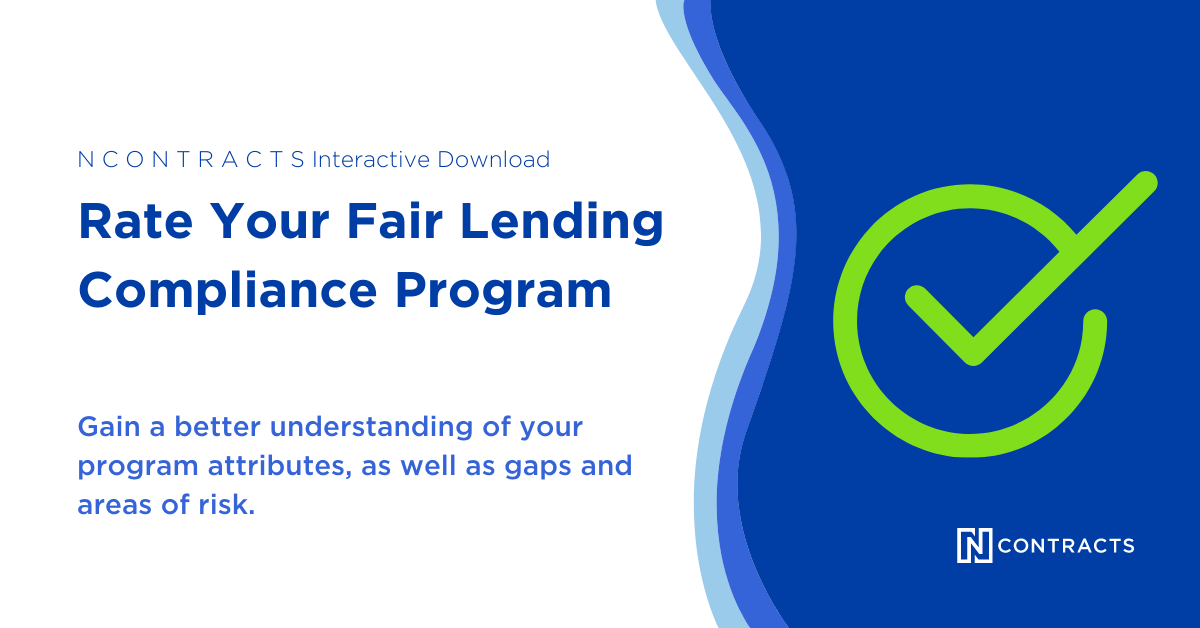Lenders often rely on manual processes when it comes to lending compliance. This is especially true for smaller banks, credit unions, and mortgage brokers.
With budgets stretched thin, lenders compare the cost of a seemingly free spreadsheet against a more expensive investment in lending compliance software, and the spreadsheet wins out. But is that spreadsheet really free when you consider the work it takes to generate the data it holds and its limited functionality? Before you write off lending compliance software, take a few minutes to assess its value and the potential return on investment (ROI).
You may be surprised by both the cost savings and the value lending compliance software adds.
ROI on Lending Compliance Software: Cost Savings
Close more loans. Lending compliance software helps streamline the loan process and provide more detailed reporting, making it possible to close loans more quickly—allowing an FI to increase its overall loan volume and profitability. Every extra loan adds to the bottom line.
More accurate data. Lending compliance software can tell you when loan data is missing or appears incorrect. Geocoding, HMDA, and red flag checks upon origination for all federal, state, and local regulations, immediately identify missing or inaccurate data. E-signed verifications and digital data checks ensure one error doesn't cascade into more issues, delaying the lending process.
If your lending compliance software corrects just three loans that would have been rejected as high cost, the income from those loans alone could pay for the system in just a few months.
Avoid loan repurchases. If your loans don’t comply with investor guidelines, including QM reviews, it can result in regulatory fines or repurchase requests from investors. Lending compliance software ensures loans adhere to investor guidelines.
Identify revenue opportunities. Are you getting the best pricing for your loans? Lending compliance software allows lenders to upload investor information, making it possible to identify loans that might generate additional basis point revenue on the secondary market.
Reduce identity theft. The Federal Reserve reports that synthetic fraud (where a fraudster creates an ID instead of stealing an existing one) costs U.S. lenders over $6 billion a year and accounts for 20 percent of credit losses. That’s in addition to traditional identity theft fueled by a near-constant stream of data breaches revealing personal information. Using lending compliance software that reduces the risk of fraud, including reducing identity theft risk with ALTA Registry reviews, means your financial institution loses less money to loan fraud.
ROI on Lending Compliance Software: Time Savings
Makes regulatory updates so you don’t have to. From Regulation Z dollar thresholds to the qualified mortgage (QM) rule, lending regulations and thresholds are constantly evolving—not to mention all the state regulations. Lenders without lending compliance software must manually identify and keep pace with these changes (subscribing to multiple newsletters and publications) and then adjust policies, procedures, and programs.
If the lending compliance software you’re considering is automatically updated to address any changes, you’ll benefit from significant time savings while feeling confident that your program is up-to-date and not missing any small details that could attract negative regulatory attention.
Provides detailed audit trails. Who performed a loan and when? It’s a seemingly simple question, but when tracking loan reviews in an Excel file, that data must be manually recorded for each loan. It’s easy to forget that step, which can lead to questions of whether work was done—and if it needs to be redone.
Lending compliance software automates the audit trail, documenting files with timestamps and user data for every review performed during the loan process.
Improves efficiency. Instead of manually managing one-off reviews, lending compliance software can integrate into workflows and combine multiple services into one platform. That means loan reviews are performed more quickly and accurately.
Compare the time and money-saving benefits of lending compliance software with your existing loan compliance program. You may discover huge potential for increased efficiencies and savings.

